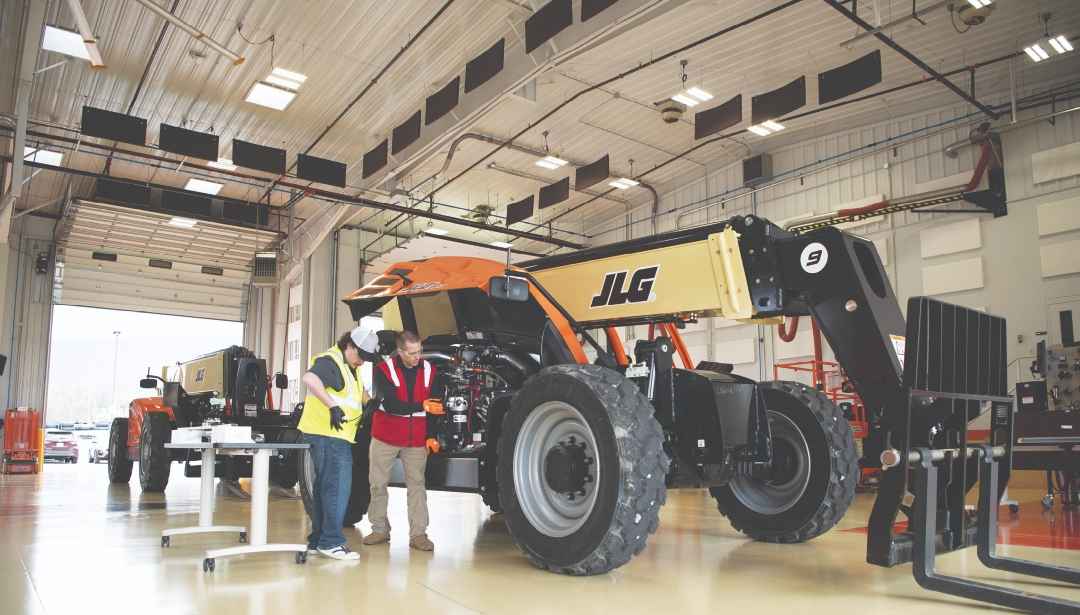
Info provided by JLG
Equipment downtime can set you behind schedule and budget. Equipment needs to be in top working to condition achieve the best possible total cost of ownership (TCO). The bottom line is that to be sure you’re getting the most out of your access equipment, you need to keep your fleet up and running efficiently.
Equipment care involves several key steps, including inspections, service and parts replacement. JLG Industries, Inc., an Oshkosh Corporation business and a manufacturer of mobile elevating work platforms (MEWPs) and telehandlers, provides answers to four key questions about equipment maintenance, parts and service that can help you put best practices and solutions in place:
Q1: What different types of machine inspections should be conducted?
Before operating a MEWP or telehandler, it is important to complete these four inspections:
#1: Pre-Start Inspections
A pre-start inspection of the machine should be conducted to ensure it is safe to operate. This type of inspection includes, but is not limited to:
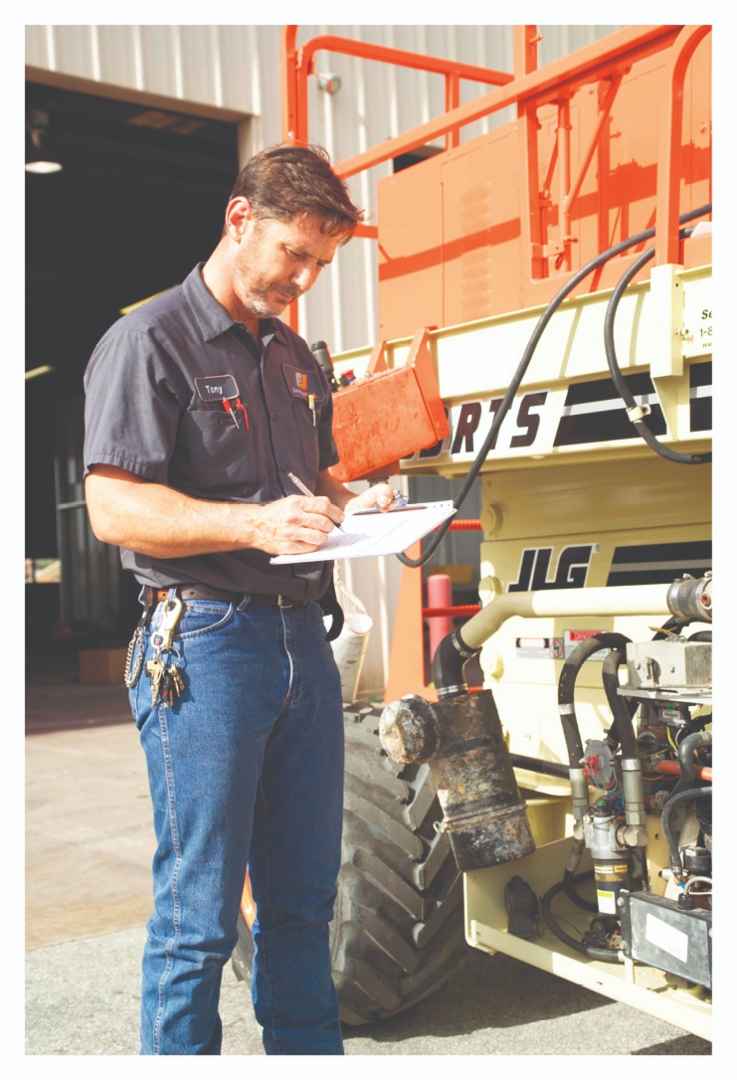
A pre-start inspection should also include a check to make sure that all safety devices are operating properly, as well as a check for modifications to the machine’s components. It is important at this point to verify that any modifications on the machine have been approved by the manufacturer to avoid safety violations.
#2: Walk-Around Inspection
Access equipment gets a lot of use throughout the work week, and things do happen — items get damaged, cracked or worn out. These discrepancies may start small, and may not even be noticeable at first, but over time, as they get bigger, they could affect the safe operation of the machine. Taking time each day to do a 360-degree walk-around of the machine will help locate these discrepancies as soon as possible.
The walk-around needs to include a thorough, visual inspection of all the machine’s critical components, including (but not limited to) the chassis, engine compartment, electrical connections, scissor stack or boom assembly, control systems and stations and so on. A machine’s Operations and Safety Manual is the best resource to consult on how to conduct a proper walk-around inspection.
#3: Function Tests
Once the walk-around inspection is completed, perform a function check on all the machine’s systems to ensure they operate properly. These should be done in an area free of overhead and ground-level obstructions.
#4: Annual Machine Inspection
Once a year (no later than 13 months from the previous one), ANSI and CSA guidelines require MEWP equipment owners and fleet managers to conduct annual machine inspections (AMI) on every aerial lift in their fleets, regardless of brand, make or model. An AMI can help verify that each piece of equipment, and all the machine’s components, are in good operating condition. It also can verify that the machine is registered with the OEM and that any open safety-related bulletins are addressed as part of the inspection.
Q2: Should wear parts be included in inspections?
Yes, all parts on these machines need to be thoroughly inspected and serviced regularly to help prevent operator injuries, major repairs and unplanned downtime.
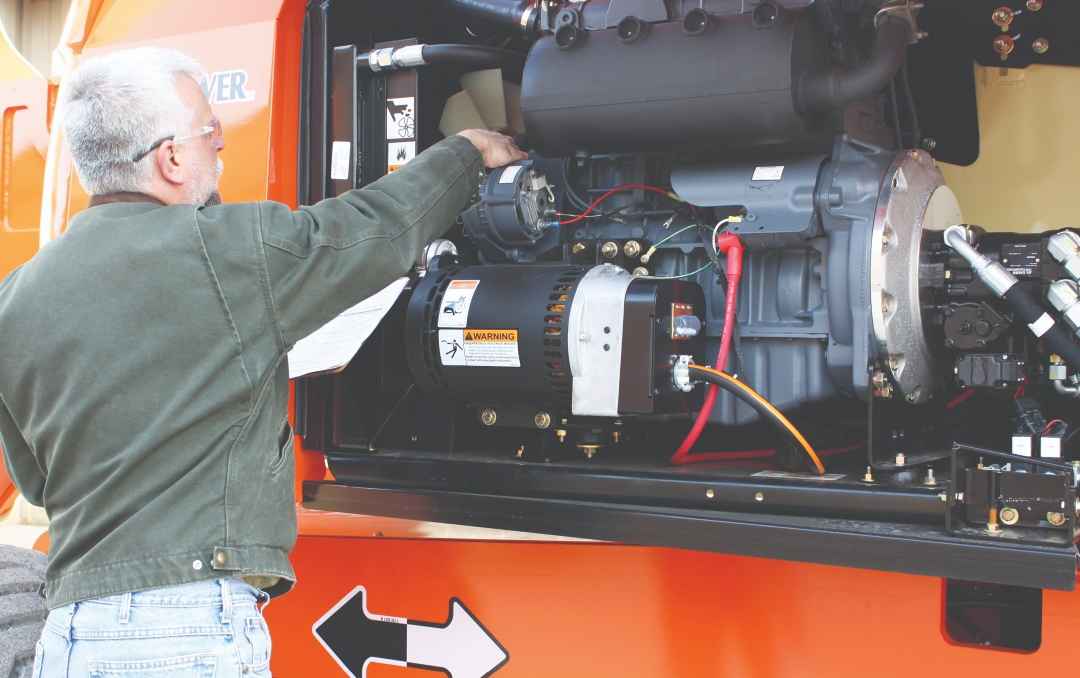
Any part that affects the safety or productivity of a machine should be checked often. Using a combination of hands-on and data inspections, be sure you regularly check these wear parts to ensure operator safety and equipment efficiency.
Some of the easiest components to check are also ones that can have the most severe consequences if they have issues. For example, a walk-around of a telehandler before use should include the machine’s tires and fluid levels (hydraulic, oil, DEF, fuel, etc.), as well as steering and brake (emergency and parking) systems, headlights, taillights, brake lights, horn and windshield wipers. If any of those aren’t functioning properly, it could cause injuries to your crew or damage to other equipment.
On a MEWP, it is important to check the work platform carefully, including the operator’s controls (ex. switches and buttons), guardrails, fasteners, locking pins, harnesses, welds, cables, stabilizers and outriggers to ensure they aren’t damaged, loose or missing parts. Issues with any of the parts could cause the operator to fall or parts to fall off from an extended height, which could seriously injure someone below.
Tires and tracks also play an important role in keeping a MEWP or telehandler reliable on the jobsite. These can be damaged by surface materials, incorrect installation, heat and other jobsite conditions.
Application impact
How and where the machine is used also contributes to its ongoing productivity and efficiency. It’s important for crews to also check for environmental jobsite hazards like uneven terrain, severe weather, debris and other obstructions in their daily workplace inspections.
In addition to planned inspections for these worn parts, it’s also important to ask for operator feedback about how the machine is functioning. They might notice a slight change in the equipment — whether that’s a rattling or reduction in efficiency — that will help you identify potential issues before you visually notice them.
When is it time to replace it?
While each type of part will present its own signs that it’s worn, here are some general guidelines that it’s time to replace.
If any of the lights or the horn on a piece of equipment fails to work, it’s time to replace them — and remove the machine from service until they are fixed. Always make sure that all of the machine’s operation switches, buttons and controls work properly.
Watch for tires that have bulges or broken belts, damaged or loose lug nuts, chunking treads, low pressure, punctures (cuts, rips or tears), exposed sidewalls or the fill becomes compromised.
Signs that tracks need to be replaced include finding visible steel cording, cracks, worn sprockets, loss of tension, missing or loose lug nuts or if they become nearly flat. Keeping tracks free of debris can help prevent damage and extend their life.
Work platforms and their components that have dents, damage, excessive rust or cracks in the welds need to be addressed before operation. Ensure nothing is missing or damaged before use, as well.
If any of these wear parts appear to be worn — but aren’t to the point of needing to be replaced yet — check them daily. Even if they haven’t had issues yet, they may begin affecting the machine’s level of efficiency and productivity and need to be replaced. Always consult the OEM-approved Operation and Safety Manual and Parts Manual for the machine for additional guidance on replacing worn parts.
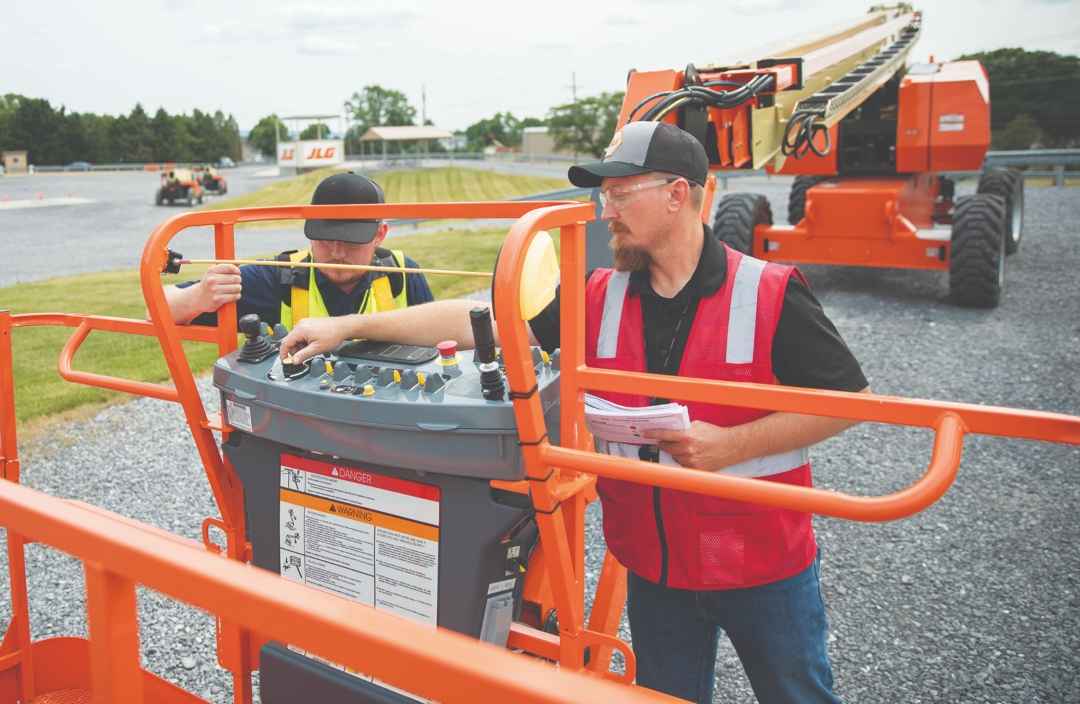
Stick to the inspection checklist
While each component on a machine should be inspected following the OEM’s recommended maintenance schedule, some parts require more frequent attention. Get to know which wear parts are important to inspect — and what signs suggest it’s time to replace them.
Q3: What are the options for replacing parts?
Genuine Parts
A factory-approved part that is supplied by the original equipment manufacturer (OEM) in their packaging is known as a genuine part. Genuine parts are the exact replacement parts for your equipment, so you don’t have to worry if they will be as effective as the previous one. They will most likely come with a manufacturer’s warranty, improving the confidence level you can have in the parts and maximizing the resale value of the equipment.
Aftermarket Parts
As the name suggests, aftermarket parts come out after the equipment has come to the market. These parts follow the same designs as the original versions; however, they might be slightly enhanced or use different materials after producers see what did or didn’t work in the initial versions. Aftermarket parts can also come from a different manufacturer than the one who originally produced them.
While not always the case, aftermarket parts tend to cost less than genuine parts — but remember that quality varies by manufacturer. With aftermarket parts, there is always the risk of counterfeit or low-quality parts, which is why purchasing them from a reputable manufacturer is important. Using these parts can also affect or void the coverage on the equipment, but the competitor may offer a parts warranty, as well. Like with any purchase, it’s good to do your homework.
Competitive Parts
When a manufacturer offers replacement parts for its competitor’s machines, these components are called competitive parts. Competitive parts have evolved to become more comparable to OEM parts with the same form, fit and function as the originals. They are crafted to look and function like genuine parts from other original equipment manufacturers, but if they are not sourced directly from the OEM, they may be offered in different, custom variations than the original part.
Remanufactured Parts
Designed to be an economical option that will keep your machines in working order, remanufactured parts are ideal for repairing older equipment. These parts start as worn components that are restored to a like-new condition. Then, remanufactured parts are tested to ensure they match OEM specifications and perform to a high standard.
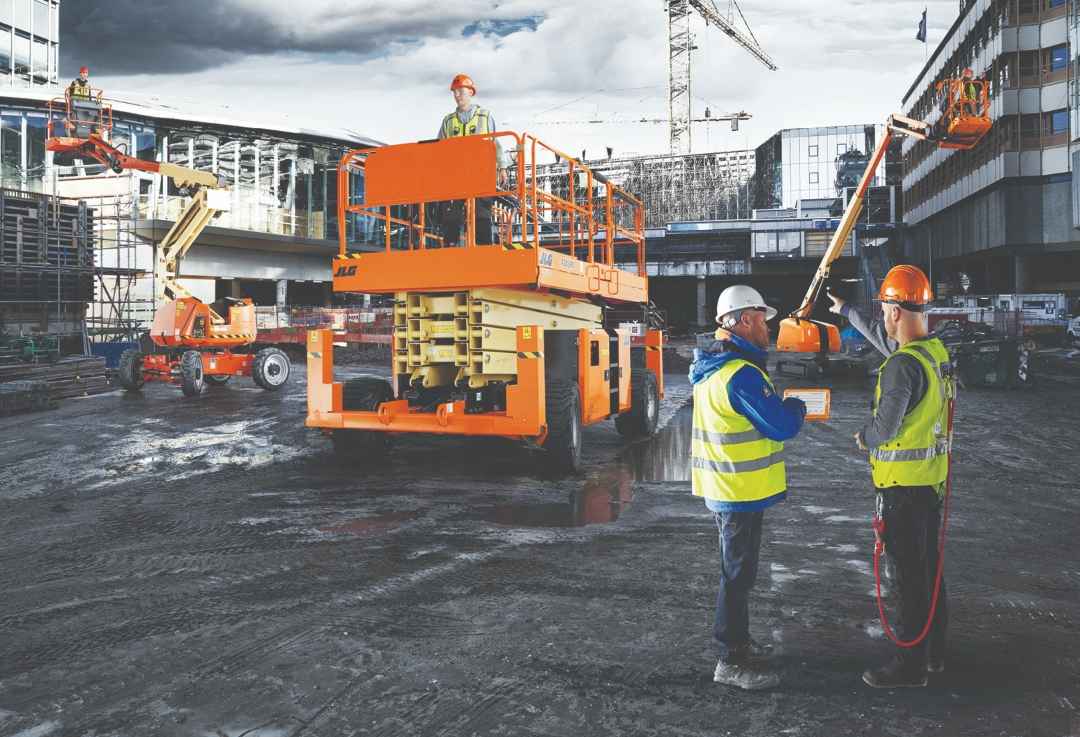
Q4: Should a fleet stock common wear parts?
Getting replacement parts quickly — especially common wear parts — can significantly reduce the amount of time needed to get a machine back to work. The most efficient and economical way to do this is to proactively stock common wear parts in your fleet inventory.
Before you start shopping, though, ask yourself these questions:
The answers will give you a better idea of what parts are critical to keeping your fleet up and running.
Once you understand what parts you will need to maintain your equipment, start breaking down the specifics of the type of inventory you should stock. For machines that are integral to your services, you will want to have fully stocked spare parts. Even if a machine is new, that doesn’t eliminate the need for spare parts.
Maintaining an inventory list with lead time and delivery information is also important. If there are parts that are regularly difficult to source or with known delays, those should be kept in your inventory. For example, they may only be available from a single vendor or must be shipped from overseas.
The organization process should include classifying parts. For example, designating parts as critical will help you prioritize them for ordering.
Uptime Matters
Equipment uptime has a direct impact on a company’s revenue. This means that when downtime does occur, whether for planned maintenance or unexpected issues, convenient access to parts and services can get a machine back to work as quickly as possible, increasing productivity, reducing cost of ownership and maximizing your investment.